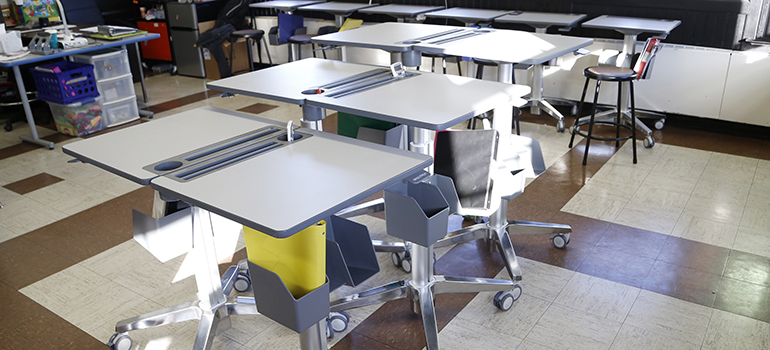Sitting through a long school day can leave students feeling tired, unfocused and watching the clock. But exactly how much are students, especially young learners, distracted? One group of researchers tackled this question by observing kindergarten through fourth-grade students in more than 50 classrooms to track off-task behavior for one school year. The results were published in the 2016 paper, “Off-task behavior in elementary school children,” on ScienceDirect.
The researchers gathered more than 100,000 behavior observations from 1,100 students, finding that the average elementary school student is distracted more than one quarter of the time. This applied to all observed grades, ages and socioeconomic statuses. As lesson time increased beyond 10 minutes, so did off-task behavior. The researchers discovered that as much as one-quarter of instruction time lasted longer than 17 minutes – this exceeds the average adult attention span of 15 minutes, according to Karrie Godwin, one of the lead authors of the study.
This can be problematic for educators who have to stop instruction time to get students back on task. But what options are available to teachers when students seem to be hardwired to lose interest?
One possible solution: movement.
To help kids stay focused and engaged, educators may only need to look to their classroom furniture. Traditional stationary desks, which anchor students and force inactivity, hinder the positive benefits of natural movement in the classroom. Access to mobile, height-adjustable standing desks infuse low-level physical activity (LLAP) into the classroom. As students alternate between sitting, standing and walking, they burn more calories and send more oxygenated blood to the brain. This is proven to lead to greater student attention and engagement. Research also shows that integrating movement helps improve concentration and promote better behavior. These improvements can also promote better academic performance.
Offering solutions to address off-task behavior is more important than ever before. More than 6 million children in the U.S. have ADHD, making concentration a significant learning challenge for both teachers and students to conquer. With sit-stand desks, students can adjust their position or fidget without distracting others based on their own needs. This helps kids feel more integrated into the classroom and reduces downtime associated with managing these students, all the while helping all students exercise their minds (and bodies) with standing.
Instead of feeling frustrated when students’ focus wanes throughout a lesson, educators can use movement-friendly furniture to break-up inactivity and boost energy levels. The flexibility to change the classroom and each student’s posture throughout the day can help keep students engaged and ready to learn.
Learn more about at JustStand.org.
Relevant Posts
Stay in the know
Sign up and get the latest and greatest content from JustStand's MoveMore blog.

